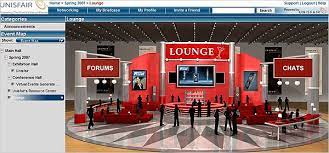The Power of Expo Platforms: Revolutionizing Events
In today’s digital age, the way we host and attend events has undergone a significant transformation. With the rise of virtual and hybrid events, the demand for innovative solutions to recreate the immersive experience of in-person gatherings has never been greater. This is where expo platforms come into play, revolutionizing the event industry.
What is an Expo Platform?
An expo platform is a comprehensive digital solution that allows event organizers to create and host virtual or hybrid exhibitions, conferences, trade shows, and more. It provides a dynamic online environment where attendees can interact with exhibitors, access content, participate in live sessions, and network with other participants.
The Benefits of Expo Platforms
Expo platforms offer numerous advantages over traditional physical events. Here are some key benefits:
- Global Reach: By removing geographical barriers, expo platforms enable participants from around the world to attend events without the need for travel expenses or visa restrictions.
- Cost-Effectiveness: Hosting events virtually reduces costs associated with venue rentals, logistics, travel arrangements, and accommodation.
- Flexibility: Expo platforms provide organizers with flexibility in terms of event format (virtual, hybrid), duration, and scheduling options. They can easily adapt to changing circumstances or unexpected situations.
- Enhanced Engagement: Interactive features such as live chat, Q&A sessions, virtual booths, gamification elements, and networking opportunities foster engagement among attendees and exhibitors.
- Data Insights: Expo platforms offer valuable analytics and data insights that help organizers measure attendee participation levels, track user behavior patterns, and gather feedback for future improvements.
Key Features of Expo Platforms
Expo platforms typically offer a wide range of features to deliver an immersive and interactive event experience. These may include:
- Virtual Booths: Exhibitors can showcase their products or services through customizable virtual booths with rich media content, brochures, videos, and live demos.
- Live Streaming: Organizers can broadcast live sessions, keynote speeches, panel discussions, and workshops to engage participants in real-time.
- Networking Tools: Attendees can connect with each other through private messaging, video calls, or group discussions to foster meaningful connections and collaborations.
- Content Libraries: Event organizers can curate and provide access to a variety of on-demand content such as presentations, whitepapers, case studies, and recorded sessions.
- Analytics Dashboard: Detailed analytics dashboards offer valuable insights into attendee engagement metrics, session popularity, booth visits, and more.
The Future of Events
The COVID-19 pandemic has accelerated the adoption of expo platforms as event organizers seek alternatives to physical gatherings. However, even beyond the pandemic era, these platforms are likely to continue shaping the future of events. The convenience they offer in terms of accessibility and cost savings combined with their ability to provide engaging experiences make them a compelling choice for both organizers and attendees.
In conclusion, expo platforms have transformed the way we approach events by bridging the gap between physical and virtual experiences. With their extensive features and benefits, they have become an indispensable tool for hosting successful virtual or hybrid events. As technology continues to evolve, we can expect expo platforms to further innovate and redefine the event landscape.
Maximizing Event Success: Your Guide to Understanding and Leveraging Expo Platforms
- What is an expo platform?
- How does an expo platform work?
- What are the benefits of using an expo platform for events?
- Can virtual events on an expo platform replace physical events?
- What features does an expo platform offer?
- How can I engage attendees on an expo platform?
- Is it possible to customize the look and feel of the expo platform?
- Can I track attendee engagement and gather data on an expo platform?
- Are there any technical requirements for hosting events on an expo platform?
What is an expo platform?
An expo platform is a comprehensive digital solution that revolutionizes the way events are hosted and attended. It provides event organizers with a dynamic online environment to create and host virtual or hybrid exhibitions, conferences, trade shows, and more. With an expo platform, attendees can interact with exhibitors, access content, participate in live sessions, and network with other participants. This innovative platform removes geographical barriers, reduces costs associated with physical events, offers flexibility in event format and scheduling options, enhances engagement through interactive features, and provides valuable data insights for organizers. In essence, an expo platform brings the immersive experience of in-person events to the digital realm, transforming the way we connect and engage with each other in the event industry.
How does an expo platform work?
An expo platform is a comprehensive digital solution that facilitates the hosting of virtual or hybrid exhibitions, conferences, trade shows, and more. The platform works by creating an immersive online environment where event organizers can set up virtual booths for exhibitors to showcase their products or services. Attendees can explore these booths, interact with exhibitors through live chat or video calls, access informative content such as brochures and videos, and even participate in live sessions such as keynote speeches or panel discussions. Networking tools allow participants to connect with each other, fostering meaningful collaborations. The platform also provides analytics and data insights for organizers to measure attendee engagement and gather feedback. Overall, an expo platform seamlessly combines various interactive features to recreate the experience of a physical event in a virtual or hybrid setting.
What are the benefits of using an expo platform for events?
Using an expo platform for events offers a multitude of benefits. Firstly, it provides a global reach, allowing participants from anywhere in the world to attend without the constraints of travel expenses or visa restrictions. Additionally, it is a cost-effective solution as it eliminates expenses related to venue rentals, logistics, and accommodation. Expo platforms also offer flexibility in terms of event format and scheduling options, enabling organizers to adapt quickly to changing circumstances. The interactive features available on these platforms enhance attendee engagement through live chat, Q&A sessions, virtual booths, and networking opportunities. Furthermore, expo platforms provide valuable data insights and analytics that help organizers measure attendee participation levels and gather feedback for future improvements. Overall, utilizing an expo platform revolutionizes events by delivering immersive experiences while maximizing convenience and cost savings.
Can virtual events on an expo platform replace physical events?
The question of whether virtual events on an expo platform can replace physical events is a common one. While virtual events offer numerous advantages such as global reach, cost-effectiveness, and flexibility, they cannot entirely replace the unique experience of in-person gatherings. Physical events provide a tangible environment for face-to-face networking, hands-on product demonstrations, and the opportunity to immerse oneself in a specific atmosphere. However, virtual events on an expo platform have proven to be a valuable alternative during times when physical gatherings are not possible or convenient. They offer engaging features like live streaming, interactive booths, and networking tools that help recreate aspects of the in-person experience. Ultimately, the decision between virtual and physical events depends on the specific goals, target audience, and nature of the event.
What features does an expo platform offer?
An expo platform offers a wide range of features designed to enhance the virtual or hybrid event experience. These features include virtual booths where exhibitors can showcase their products or services with rich media content and live demos. Live streaming capabilities allow organizers to broadcast keynote speeches, panel discussions, and workshops in real-time. Networking tools enable attendees to connect with each other through private messaging, video calls, or group discussions. Content libraries provide access to on-demand resources such as presentations, whitepapers, and recorded sessions. Additionally, expo platforms often offer analytics dashboards that provide valuable insights into attendee engagement metrics and booth visits. These features collectively contribute to creating an immersive and interactive event environment for participants.
How can I engage attendees on an expo platform?
Engaging attendees on an expo platform is crucial for creating a memorable and interactive event experience. Here are some effective strategies to engage attendees on an expo platform:
- Provide interactive features: Incorporate live chat, Q&A sessions, and polls to encourage active participation and foster real-time engagement between attendees, speakers, and exhibitors.
- Gamify the experience: Introduce gamification elements such as quizzes, challenges, or scavenger hunts to make the event more fun and competitive. Offer rewards or prizes to incentivize participation and create a sense of excitement.
- Virtual networking opportunities: Facilitate networking through virtual meeting rooms, video calls, or group discussions where attendees can connect with each other based on shared interests or professional backgrounds.
- Engaging content delivery: Curate compelling content that is relevant and valuable to your target audience. Offer a mix of live sessions, pre-recorded presentations, panel discussions, and downloadable resources to cater to different preferences.
- Virtual booths with rich media: Encourage exhibitors to create visually appealing virtual booths with interactive elements like videos, product demos, downloadable brochures, or exclusive offers. This will attract attendees’ attention and encourage them to explore further.
- Social media integration: Leverage social media platforms to extend the reach of your event and encourage attendees to share their experiences using event-specific hashtags. This creates a sense of community and allows for wider engagement beyond the expo platform itself.
By implementing these strategies effectively, you can create an engaging environment that captivates attendees’ attention, encourages active participation, and leaves a lasting impression on their overall event experience.
Is it possible to customize the look and feel of the expo platform?
Yes, it is indeed possible to customize the look and feel of an expo platform. Expo platforms offer a range of customization options to ensure that the virtual or hybrid event aligns with the branding and theme of the organizer. From choosing color schemes, adding logos and banners, to customizing booth designs and layouts, organizers have the flexibility to create a unique and immersive experience for their attendees. By personalizing the platform’s aesthetics, organizers can maintain brand consistency and create a cohesive environment that reflects their event’s identity. Customization plays a crucial role in making attendees feel connected to the event and enhances their overall engagement throughout the virtual or hybrid experience.
Can I track attendee engagement and gather data on an expo platform?
Absolutely! One of the key advantages of using an expo platform is the ability to track attendee engagement and gather valuable data. Expo platforms offer robust analytics and data insights that allow event organizers to measure attendee participation levels, track user behavior patterns, and gain valuable feedback for future improvements. With features like detailed analytics dashboards, organizers can monitor session popularity, booth visits, content consumption, networking interactions, and more. This data provides valuable insights into attendee engagement, helps identify areas of interest or improvement, and enables organizers to make data-driven decisions for optimizing future events.
Are there any technical requirements for hosting events on an expo platform?
When it comes to hosting events on an expo platform, there are usually some technical requirements to ensure a smooth and seamless experience for both organizers and attendees. While specific requirements may vary depending on the platform, common technical considerations include a stable internet connection, compatible web browsers (such as Chrome, Firefox, or Safari), and an up-to-date operating system. Additionally, organizers may need to provide necessary event materials in digital formats (such as presentations or videos) and ensure that their content is optimized for online viewing. It’s always advisable to consult the expo platform’s guidelines or reach out to their support team to get detailed information on the technical requirements specific to their platform.



